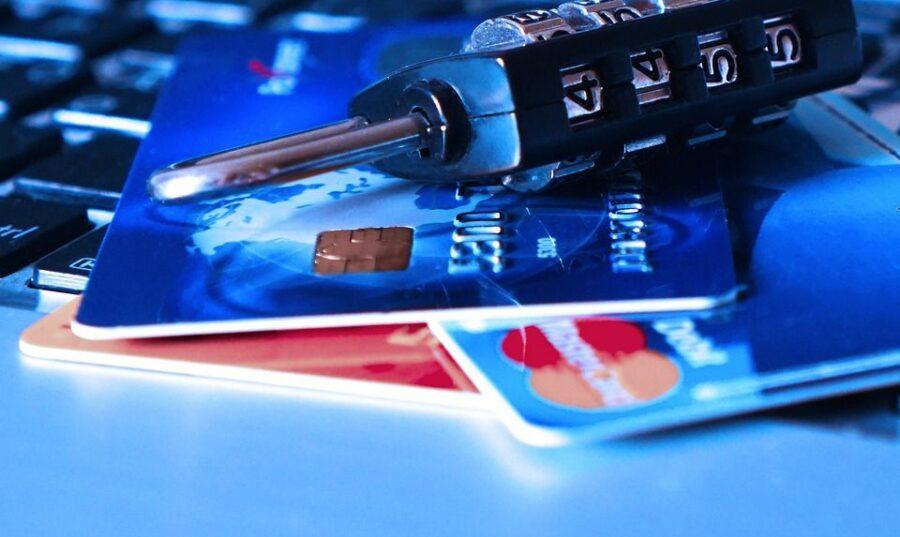8 Strategies to Protect Assets from Cybersecurity Threats and ID Theft

Retirees are common targets of cyber scams, attacks, and thefts. In 2023, Americans over 60 reported the highest number of cyber crimes, with over 100,000 complaints filed by people in that age group. We know that retirees are more vulnerable to cybersecurity threats. For that reason, as a retired person, you must take steps to protect your online presence from vulnerabilities. In this article, we will cover eight strategies to help guard against cybersecurity threats and identity theft.
Why Are Retirees Particularly Vulnerable to Cybercrime?
Two main factors leave retirees most at risk of falling victim to cybercrime. First, retirees are more likely to have accumulated savings and wealth, making them attractive targets for scammers. At the same time, they are less likely to be tech-savvy, leaving them more vulnerable to cybercriminals’ evolving methods of manipulation and extraction.
Some common online threats include:
Phishing Scams involve fraudulent emails, messages, or websites that impersonate legitimate entities to trick retirees into revealing personal information such as passwords, credit card numbers, or Social Security numbers. One subset of phishing scams, spear phishing, uses personal information and may appear to come from someone you know or trust.
Malware attacks. Malware refers to malicious software, including viruses, designed to damage or disrupt systems, steal data, or perform other harmful actions.
Social engineering. Social engineering is a strategy cybercriminals use to manipulate individuals into revealing confidential information or performing actions that compromise security. It often involves psychological manipulation and the use of personal information that attackers find about you online.
Strategy 1: Strengthen Your Password Game
When protecting your online accounts, your passwords are the first line of defense. Your password is vulnerable to cyber attacks when it is easy to guess or is the same or similar across many different online accounts. Some qualities of a strong password include complexity (a mix of characters, letters, and numbers), length (at least 12 characters), and randomness (avoiding using personal information or dictionary words).
In this day and age, any given person has tens or even hundreds of different online accounts. Because using the same password for multiple accounts is risky, you must keep track of hundreds of unique passwords to keep your online presence secure.
Many people depend on a password manager to keep all of this information straight. A password manager securely stores passwords for various accounts (e.g., email, social media, online banking) in an encrypted format. This eliminates the need to remember multiple passwords or write them down insecurely.
Another way to protect your online accounts is to implement multifactor authentication or MFA. MFA is a security measure that requires users to verify their identity using two or more distinct methods to access an account or system.
MFA significantly enhances security because even if an attacker manages to obtain a user’s password (through phishing, malware, or other means), they would still need the second factor to gain access. This layered approach makes it much harder for unauthorized users to breach accounts and is the industry standard in protecting your online personal information.
Strategy 2: Secure Your Home Network
Using an unsecured wifi network allows attackers to intercept your personal data, potentially giving them access to personal information like passwords and credit card numbers. On an unsecured wifi network, you leave yourself vulnerable to attackers who can infect your device with viruses, spyware, or ransomware. Luckily, there are ways to secure your wifi network.
One common strategy for securely accessing the internet is using a Virtual Private Network (VPN). When you use a VPN, your internet traffic appears to come from the VPN server rather than your actual IP address. This masks your IP address and location, enhancing online privacy and anonymity.
VPN servers also establish a secure and encrypted connection. This encryption ensures that your data transmitted over the internet is protected from interception by third parties, such as hackers or government surveillance.
Strategy 3: Encrypt Sensitive Data
Your data security plan will not be successful without using some amount of encryption. Encryption involves transforming data into a format that is encoded and can only be deciphered by someone who has the right decryption key. Without the proper code, your information can’t be deciphered or stolen.
Experts recommend encrypting all sensitive data, such as financial information, health records, payment information, and login credentials. However, the steps you must take to encrypt your data depend on its format. For example, the tools you need to encrypt files stored locally on your computer differ from those that encrypt data stored on the cloud.
You can find specific steps for the kind of data you want to encrypt online. It’s essential to take the time to research and understand which encryption services best suit your specific needs.
For personalized assistance, don’t be afraid to seek professional help. Cybersecurity consultants or freelance IT professionals specializing in encryption can help you get started.
Strategy 4: Stay Vigilant Against Phishing and Social Engineering
Spotting phishing attempts and social engineering tactics is crucial to protecting yourself from falling victim to:
- Offers that seem too good to be true. Be skeptical of emails that promise unrealistic rewards, such as large sums of money or high-value prizes.
- Pressure Tactics. Watch for emails in which the sender pushes hard for you to take action by trying to create a sense of fear, such as by threatening to close your account or saying you’ve won a prize that requires immediate action.
- Mismatched URLs. Compare the link text with the URL it points to. If they don’t match, it’s likely a phishing attempt.
- Messages are not personalized. People who send phishing emails may use generic greetings such as “Dear Customer” instead of addressing you by name.
- Suspicious Email Domains. Phishing emails often come from email addresses that look similar to legitimate ones but may have slight variations or misspellings.
- Fake Security Alerts. Emails claiming your account has been compromised require you to click a link to verify or reset your information.
- Unsolicited Requests: Question unexpected emails, phone calls, or messages asking for sensitive information or urgent actions
- Spear Phishing. Be especially cautious of targeted phishing attacks (spear phishing) that are personalized and may appear to come from someone you know or trust.
- Requests for personal information. Emails or phone calls asking for passwords, Social Security numbers, or other personal information that legitimate organizations typically do not request via unsolicited communication.
- Requests for Help. Requests for assistance from someone you know but who doesn’t usually seek your help, especially if they ask for money or personal information.
- Requests for Remote Access or Control. Unexpected requests to remotely access your computer or install software, especially if it’s from someone claiming to be from tech support or a trusted entity.
Strategy 5: Monitor Your Financial Accounts and Credit
Regularly monitoring your credit and financial accounts is essential in stopping cybersecurity threats. The faster you recognize suspicious activity, the more vigilant and proactive you can be against attempts to meddle in your finances.
Strategy 6: Keep Software and Systems Updated
One of the best ways to protect your personal information is to keep all your software and systems up to date. This applies to the operating system of your computer and devices and the apps downloaded on them.
Strategy 7: Secure Your Mobile Devices
So much of our online activity occurs on our mobile devices, so it is essential to secure data on your mobile devices in addition to your computer. Many of the strategies mentioned above apply to your mobile devices.
Strategy 8: Stay Informed on Cybersecurity Threats
The threats to our online information might seem overwhelming at first. Luckily, many trusted resources are designed to support retirees seeking to protect against cybersecurity threats:
- Federal Trade Commission Consumer Protection
- CNBC report on cybercrime against seniors
- AARP page on scams and Fraud
- A Complete Guide to Senior Scams by RetireGuide
- CISA’s resources for older Americans
Getting more familiar with technology is one of the best ways to stop cybersecurity risks. Understanding the online world and keeping up to date as it inevitably evolves, recognizing suspicious online behavior, and staying on the lookout for cybercrime will greatly lower your chances of becoming a victim of cyber attacks.
Do the Right Thing Against Cybersecurity Threats
Securing your security online is a task that requires continuous effort. To enhance cybersecurity during retirement, it’s essential to create strong passwords, secure the networks you rely upon, encrypt sensitive information, and beware of phishing scams and social engineering tactics.
Thanks for reading! Do you want to create thought leadership articles like the one above? If you struggle to translate your ideas into content that will help build credibility and influence others, sign up to get John’s latest online course “Writing From Your Voice” here.



